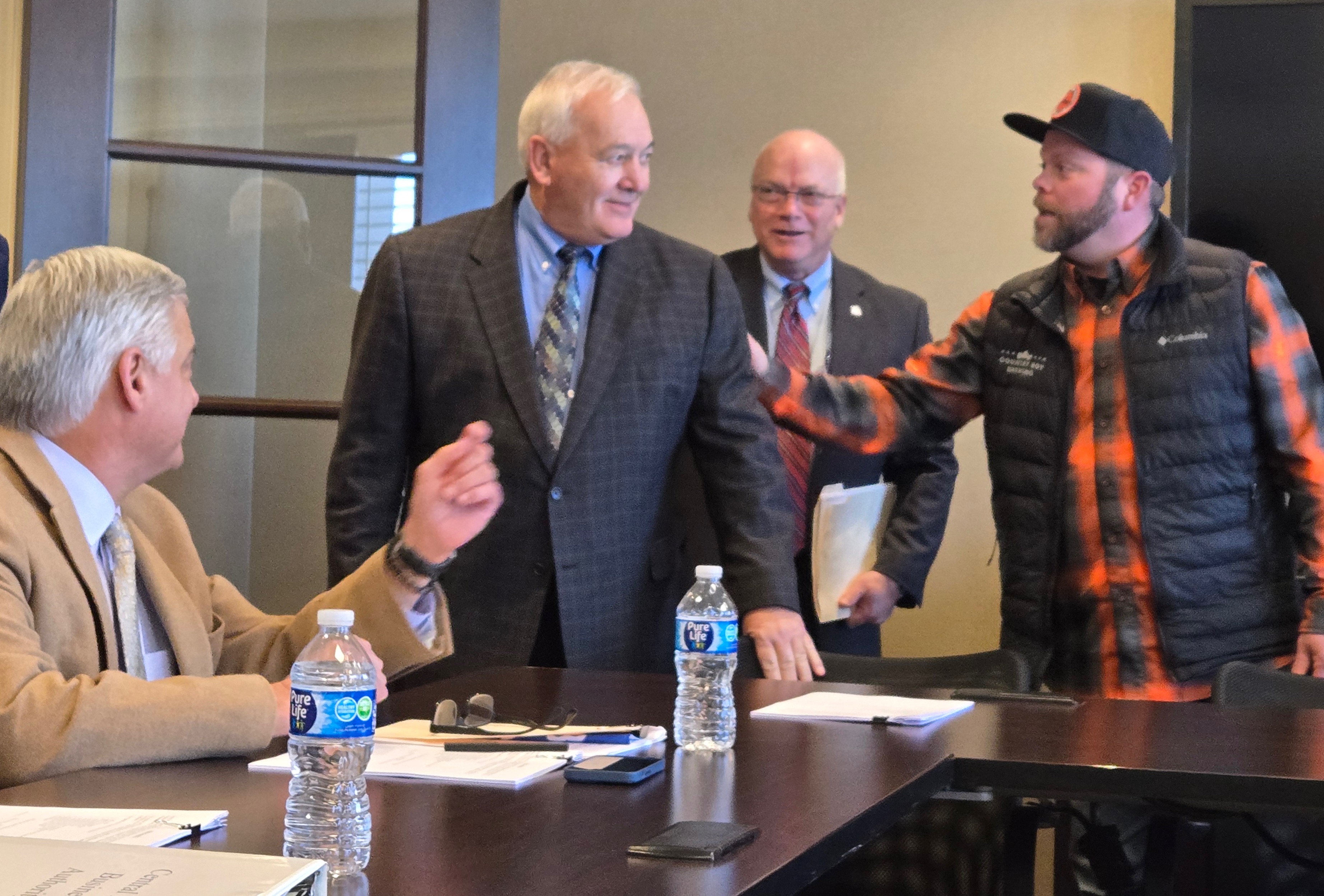Industrial park to bring hundreds of jobs, but also pressures

Madison County’s population is expected to grow by more than 80% between 2020 and 2050, according to the Kentucky State Data Center. Berea is already experiencing growing pains. What does such dramatic expansion mean for current and future Bereans? Welcome to The Edge’s exclusive investigation.
LEXINGTON — Board members from the central Kentucky counties and municipalities that recently signed on to a novel regional industrial park agreement met in December of last year to draw up board duties and assignments.
The basic premise of the interlocal Central Kentucky Industrial Park agreement, according to multiple media advisories distributed by all parties involved, is to create a regional business location that will attract heavy and advanced industries to benefit from resources that perhaps one municipality or county could not offer on its own, but that a group together can. These resources might include skilled labor, access to interstate highways, cargo railroad services, enough acreage to build upon, and tax benefits.
“This way, instead of us competing with each other, we all benefit,” Reagan Taylor, Madison County’s judge executive, who was at the meeting, told The Edge in a sidelines interview. “It’s the way many municipalities are going in Kentucky.”
The Board members per location are:
Berea — Glenn Jennings, former Berea City Council member and retired president, CEO, Delta Gas
Madison County — Jeff Fultz, president, Central Bank, Madison County Market
Lexington-Fayette Urban County Government — Kevin Adkins, chief development officer, LFUG; Karen Hill, retired COO, Baptist Health Lexington
Scott County — Mike Hockensmith, president, The Hockensmith Agency; Daniel Harrison, co-founder of Country Boy Brewing
Aside from Taylor, other elected leaders who formed the agreement on behalf of their communities attended the meeting, including Berea mayor, Bruce Fraley; Lexington mayor, Linda Gorton; and Pat Covington, judge and executive, Scott County.
Board duties
The board will have its first active meeting virtually in February to discuss their charges such as marketing the park to industries, sending out requests for proposals, and overseeing funding for the park, including, they hope, a 5.5 million federal community grant set to be secured by Congressman Andy Barr in this year’s federal budget, and also a state product development initiative grant, in an amount still to be determined.

Berea’s contributions
But for now, it’s up to Fraley and the municipality of Berea to ensure the park’s foundational success, since the first of what are projected to be multiple sites throughout the region, will be built on 300 plus acres off Menelaus Road at the northern edge of town.
“I believe with all my heart and soul, and my mind, that regionalism is the way of the future,” Fraley told The Edge in a sit-down interview.
The business park’s founders anticipate the Berea location will attract between 700 to 1,200 jobs once fully built out over the next decade, making the necessary infrastructure and housing to support it crucial.
“I think it'll move fairly quickly, but I really think that the buildout period probably will be in the next two to three years,” Fraley said.
What does the city need to do to be ready for that timeline and beyond?
Coefficient of jobs is housing
Fraley told The Edge that even if 1,200 jobs are created, not all those hired to fill them will live in Berea. In fact, that would damage the spirit of the agreement.
“That's part of the regional partnership and the joint economic development,” Fraley said. “You have to be willing to share and to work together for the for the greater good of all.”
So, people living in Scott County are presumably going to be as likely to get jobs at the Berea facility as Bereans might be? Yes, according to Fraley.
But even if a fraction of those hired on at what is still the theoretical industrial park decide to move closer to their work, then what?
The Edge previously reported Martin Richards saying as a candidate for City Council, that Berea needs 1,100 homes to resolve our ongoing housing crisis.
Richards did not win the election, but is a member of Berea’s Planning and Zoning Commission. He spoke with The Edge for this report.
“We have to take the problem in hand,” Richards said in the interview. “I don’t know if you will find the answers to these questions today or over the next few months, but over the course of this year, the community will have input into the town’s Comprehensive Plan.”
Comprehensive Plan
By law, each Kentucky municipality must have a 20-year comprehensive plan for future development and municipal goals. They are up for revision every five years, and this is the year for Berea’s plan to be reviewed.
The public input process will begin later this year, likely over the summer, as the plan typically is adopted in late fall. Requests for proposals to planning facilitators were sent out in December of last year. If you’d like to hear more about the top three proposals chosen by the Planning and Zoning Commission, and how they scored them, the proposals will be vetted at the next P&Z meeting on Tuesday, February 25, at 6PM in the City Annex, 304 Chestnut St.
Please send in your questions about the Comprehensive Plan or anything else to do with Berea’s municipal concerns. Or visit The Edge on Facebook.
And if you’re not already a subscriber to The Edge, become one now and participate with other members of The Edge community in shaping the future of our hometown.
This story was updated on November 23, 2025
